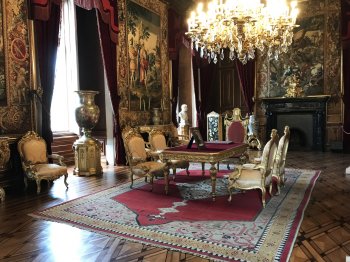Explore the best places
Monuments in Lisboa
Cordoaria Nacional / Fábrica Nacional da Cordoaria
- heritage
Avenida da Índia - Rua da Junqueira - Travessa das Galeot
1300-598, Lisboa
The building, founded in the reign of D. José, in 1771, is also known Cordoaria Nacional, Real Cordoaria da Junqueira, or Real Fábrica da Cordoaria da Junqueira.
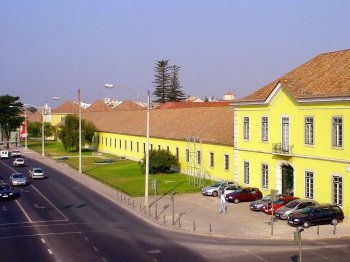
Palácio dos Marqueses de Fronteira
- heritage
Largo de São Domingos de Benfica, 1
1500-554, Lisboa
Time seems to have stopped in this beautiful renaissance garden, located at the Largo de São Domingos de Benfica. The most relevant decorative characteristics of this palace are the stucco and the glazed tiles. The Salad as Batalhas, that evokes the heroic exploits of the Conde da Torre, is in the limelight. The yard gives access to the Chape and Venus Garden and here is also the Casa de Fresco. In front is the Lago Grande (big lake) that accompanies the Galeria dos Reis.

Quinta das Águias
- heritage
Rua da Junqueira, 138
1300-345, Lisboa
The farm is also known as “Quinta de Diogo de Mendonça”, “Quinta do Visconde da Junqueira", " Quinta dos Côrte-Real" or "Quinta do Professor Lopo de Carvalho". The ashlar of glazed tiles and the retable of Quillard inside the palace chapel are worthy of notice.
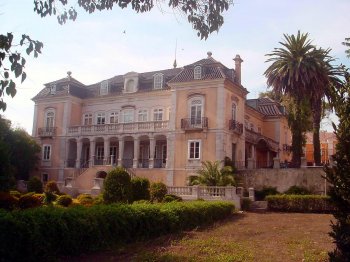
Palácio das Cortes / Assembleia da República
- heritage
Rua Imprensa à Estrela, 6
1200-619, Lisboa
This huge, white building is the seat of the Portuguese Parliament. In the end of the XVI century this was the Benedictine São Bento Monastery. The inside is imposing, with marble pillars and neoclassical statues.
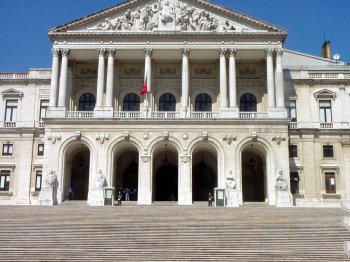
Casa-Museu Dr. Anastácio Gonçalves
- heritage
Avenida 5 de Outubro, 8
1050-055, Lisboa
It was commissioned by the painter José Malhoa with design by the architect North Jr. The "fresh" decoration of the facades was executed by Eloy, second Malhoa models and António Ramalho. The sculptures are by Costa Motta. It belonged later to Dr. Anastácio Gonçalves that bequeathed to the State. Currently works as Casa-Museu Dr. Anastácio Gonçalves.
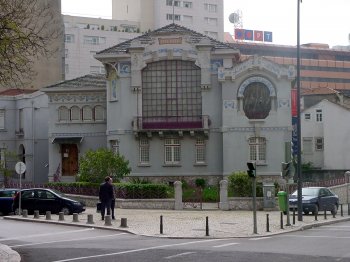
Mosteiro dos Jerónimos
- heritage
Praça do Império
1400-206, Lisboa
Exemplary monument of the grandeur of the Age of Discoveries, which is the maximum exponent of the Manueline style. The initial risk belongs to Boitaca, the architect who laid the foundations for the work. Built in limestone, it has a facade that exceeds 300 meters. Highlights include the exuberantly decorated south portico, which is one of the masterpieces of Flaming Gothic, and a double cloister considered one of the most beautiful in the world. A must-visit monument.
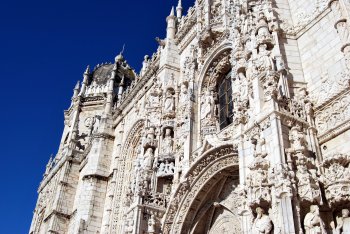
Praça do Comércio / Terreiro do Paço
- heritage
Praça do Comércio
1100, Lisboa
Located in downtown Pombalina, Praça do Comércio, also known as Terreiro do Paço, is an open, pedestrian space, with cafes and outdoor sales outlets. Highlights include the Arc de Triomphe, the equestrian statue of Dom José, by Machado de Castro and inaugurated in 1774, and the beautiful entrance to Lisbon, right in the river front.
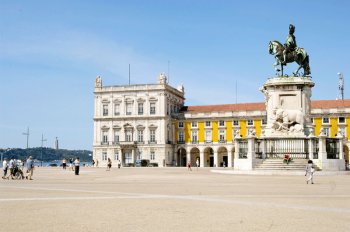
Igreja de Caselas
- heritage
Rua da Igreja
1400-201, Lisboa
The construction of this church, devoted to the Holly Family, began in 1947. In following years were promoted fund-raising campaigns to repair works.
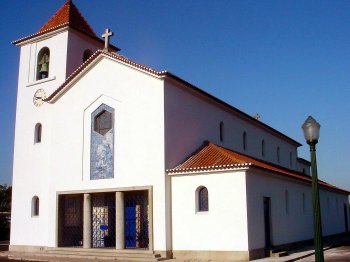
Castelo de São Jorge
- heritage
Rua de Santa Cruz do Castelo
1100-129, Lisboa
São Jorge Castle was the birthplace of Lisbon. Situated 111 meters above the waters of the Tagus, the castle and walls underwent successive adaptations over the centuries. The current appearance is that of a medieval building, with 10 square-shaped towers, where the ruins of the Royal Palace still remain. It is a pleasant space to stroll around, and for this purpose, you can choose either the gardens, which date back to 1942 and where geese and ducks roam, or the narrow alleys of the tiny neighborhood of Santa Cruz, located within the castle walls. Visitors can also climb the towers …
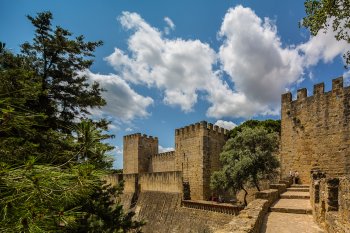
Palácio Nacional da Ajuda
- heritage
Largo da Ajuda
1349-021, Lisboa
Built to replace the “Real Barraca”, its construction began in 1795. Although it is unfinished, it is the biggest royal residence in Lisbon. This is an opulent monumnet where you may visit the halls decorated with silk tapestry, Sévres porcelain and crystal spiders.
